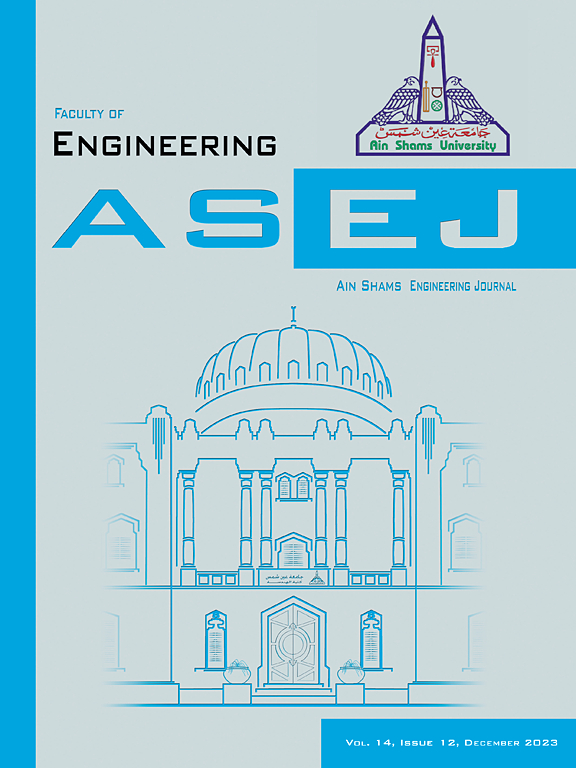Porosity and Joule heating effects in chemically reactive peristaltically driven motion of Alumina-Ethylene glycol-Water nanofluid
IF 6
2区 工程技术
Q1 ENGINEERING, MULTIDISCIPLINARY
引用次数: 0
Abstract
Background
Due to the immense use of biological materials in the medicine industry, its mathematical modelling has gained incredible attention from scientists and researchers. To understand the flows of biological fluids due to contraction and relaxation in various biological and industrial areas, the knowledge of peristaltic mechanism is very important. In addition, due to nanoparticles immense industrial and engineering (i.e., nuclear, chemical, mechanical and medical) processes likely during heat exchange in heat exchangers, in boiling and cooling of devices, micro-electromechanical devices, in cooling of automobile engine, in arrays of laser diode, in various medicines and surgeries performed through laser technology attain much attention by the researchers. Keeping in mind all the above stated discussion the prime aim here is to examine the biological materials flow formulation in the presence of nano particles because of their noticeable involvement in various biomechanics fields. For example, in gastrointestinal tract the chyme motion and significantly in various surgeries to overcome blood flow via handling the magnetic field intensity.
Methodology
The main purpose here is to analyse the peristaltic mechanism of nano fluid model through asymmetrical movement of asymmetric channel waves under the consideration of magnetohydrodynamic, porous media, Joule heating, energy dissipation, Brownian and thermophoretic motions and chemical reaction. To simplify the modelled system of equations, non-dimensionless variables, approximations of low Reynolds number and large wave length are employed. Then the exact solution of simplified momentum equation is examined, where the energy and concentration equations are solved numerically using shooting and RK-Felburgh algorithms with step-size is taken because of non-linearity and coupling. Using the obtained solution flow quantities are plotted against the parameters of interest. Finally, the discussion section provides a detailed illustration of the physical behavior of flow quantities.
Significant Findings
The physical discussion section described that decline in velocity and enhancement in temperature versus a larger nano particle volume fraction parameter, it happens because when nano particles are submerged into ordinary liquids, which denser the material appropriately and thus velocity is declined and the temperature is enhanced because of high resistance in the flow field. Due to porosity effects velocity becomes lower at the centre of the channel. Brownian and thermophoretic motions enhance the fluid temperature due to larger thermal conduction in the flow field because of these two factors. Accordingly, the Brownian and thermophoretic motions have an opposite effect on concentration. The finding is significant due to its broad implications for enhanced thermal management and fluid transport systems. Comprehending these phenomena enhances the efficacy of nanofluid-based applications, since fluid dynamics and heat transport are heavily influenced by porosity, while Joule heating may substantially impact temperature control in a reactive flow. This may lead to improved system performance, increased energy efficiency, and the advancement of smart materials and devices in technological applications.
求助全文
约1分钟内获得全文
求助全文
来源期刊

Ain Shams Engineering Journal
Engineering-General Engineering
CiteScore
10.80
自引率
13.30%
发文量
441
审稿时长
49 weeks
期刊介绍:
in Shams Engineering Journal is an international journal devoted to publication of peer reviewed original high-quality research papers and review papers in both traditional topics and those of emerging science and technology. Areas of both theoretical and fundamental interest as well as those concerning industrial applications, emerging instrumental techniques and those which have some practical application to an aspect of human endeavor, such as the preservation of the environment, health, waste disposal are welcome. The overall focus is on original and rigorous scientific research results which have generic significance.
Ain Shams Engineering Journal focuses upon aspects of mechanical engineering, electrical engineering, civil engineering, chemical engineering, petroleum engineering, environmental engineering, architectural and urban planning engineering. Papers in which knowledge from other disciplines is integrated with engineering are especially welcome like nanotechnology, material sciences, and computational methods as well as applied basic sciences: engineering mathematics, physics and chemistry.
 求助内容:
求助内容: 应助结果提醒方式:
应助结果提醒方式:


